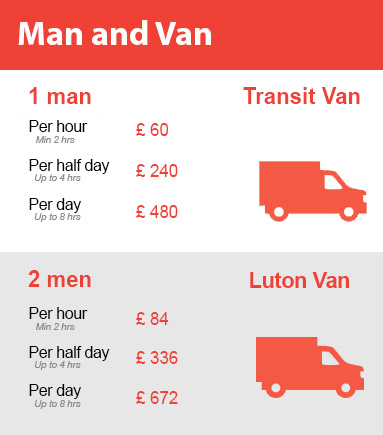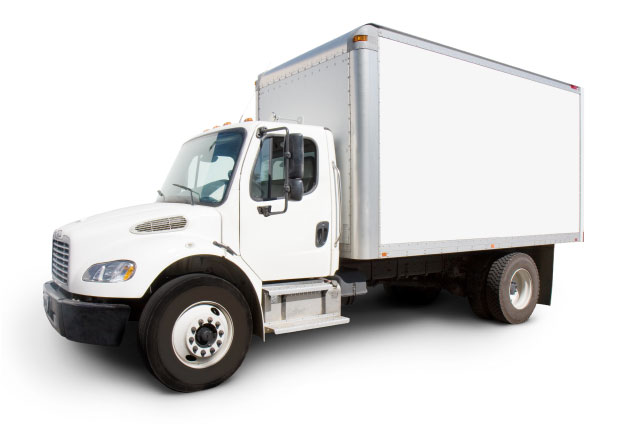Essential Hacks for Moving Your Bed and Mattress
Posted on 27/05/2025
Essential Hacks for Moving Your Bed and Mattress
Moving can be stressful, but relocating your bed and mattress doesn't have to be a nightmare. Whether you're shifting to a new apartment across town or preparing for a cross-country move, it's vital to handle your bedding furniture with proper care. Beds and mattresses are not only heavy and awkward to move, but they also require special handling to avoid damage, dirt, or injury. In this comprehensive guide, you'll discover essential hacks for moving your bed and mattress, ensuring both safety and efficiency.

Why Proper Bed and Mattress Moving Matters
Mattresses and beds are some of the bulkiest and most expensive items in your home. Investing a little time in preparation can prolong their lifespan and save you from future costs and headaches. Mishandling may lead to:
- Dirt, moisture, or pest contamination
- Structural damage to the bed frame or slats
- Tears or stains on the mattress
- Personal injuries due to the awkward size and weight
By following these bed and mattress moving hacks, you will ensure that your move is smooth, efficient, and safe.
1. Preparation is Key for Smooth Relocation
Gather Your Moving Supplies
Before you start, collect all necessary moving equipment. Having the right tools will protect your bed and mattress during transport while saving you time and physical strain. The must-haves include:
- Mattress bags or plastic covers (ideally waterproof and breathable)
- Furniture blankets or foam wrap
- Heavy-duty packing tape
- Basic tools (screwdriver, wrench, Allen key for bed disassembly)
- Moving straps or rope
- Work gloves for grip and protection
- Permanent markers and labeling stickers
Tip: Most local hardware stores or moving companies offer these supplies, and some provide reusable eco-friendly options.
Strip and Clean Your Bed
Remove all bedding, pillows, and linens. Wash and dry them before packing to prevent mildew and musty odors. This is also a good time to clean your mattress using a vacuum and some baking soda to freshen it up. Wipe down all bed frame components to remove dust or debris.
2. Disassemble the Bed Frame Like a Pro
Step-by-Step Bed Disassembly Hacks
*Disassembling your bed frame* makes the entire moving process much easier. Here's how you can tackle even the bulkiest frames:
- Snap a Photo: Take pictures of your assembled bed before disassembly, paying special attention to how components fit together, including screws, brackets, and joints. These images will be a lifesaver during reassembly.
- Keep Hardware Organized: As you remove screws, bolts, or special parts, place them in clearly labeled plastic bags. Tape these bags to the main bed frame or keep them in a designated "hardware box."
- Remove the Slats or Panels: If your bed has slats or panels, remove them first and stack them together. Use blankets or towels as padding to avoid scratches.
- Disassemble Large Components: Carefully take the frame apart, starting from the headboard and working down. Avoid undue force as this can crack or warp wooden frames.
- Wrap and Protect: Cover each part in moving blankets, bubble wrap, or old sheets. This minimizes dings and dirt during transit. Secure padding with tape.
Don't Forget Box Springs or Adjustable Bases
*Box springs, platform bases, and adjustable beds* need extra care. Some bases can be partially disassembled, while others may be transported as is. Consult your product manual or manufacturer for specific advice, as mishandling electric components can cause costly damage.
3. Mattress Moving Made Easy
Choose the Right Mattress Cover
Protecting your mattress from dirt, moisture, and bugs is essential. Quality mattress bags are designed for moving and often include reinforced handles. If you're on a tight budget, heavy-duty plastic sheeting and duct tape can suffice, but be sure to adequately seal all openings.
How to Move a Mattress Without Breaking Your Back
- Plan an Exit Route: Measure doorways, hallways, and stairs before you start moving. Remove obstacles in advance to avoid awkward maneuvers.
- Team Up: Mattresses are heavy and floppy, so enlist a friend's help. Two people can easily maneuver a mattress, reducing risk of injury and damage.
- Use Mattress Straps: There are specialized lifting straps designed for mattresses. Slide them underneath and lift by the handles for better control and balance.
- Carry Vertically: By standing the mattress on its side, you can more easily steer it through tight spots.
- Don't Fold Unless Allowed: While some foam mattresses can be folded gently, most innerspring and hybrid mattresses should never be bent or folded. Always check the manufacturer's guidelines.
Moving a Mattress Downstairs or to a Truck
Mattresses can be unwieldy on stairs. Assign one person at the upper end and one at the lower for balance. Communicate clearly and move slowly. If available, use a dolly or cart for the safest transfer over longer distances. Lay the mattress flat in the moving van to prevent warping.
4. Hacks for Moving Beds in Apartments and Small Spaces
Dealing with Tight Corners and Narrow Doorways
If your bed frame or mattress won't fit:
- Remove doors from hinges to get extra space, making maneuvering easier.
- Pivot and Angle: Try tilting the mattress or headboard vertically and pivoting through the doorway.
- Disassemble Further: If the frame is still too big, see if additional parts can be taken apart.
- Ask for help--a second or third pair of hands can make all the difference.
In high-rise apartments, coordinate elevator reservations and loading dock access with building management ahead of time.
5. Smart Packing and Loading Strategies
How to Pack Beds and Mattresses for Moving Trucks
Proper loading prevents damage in transit. Here's how:
- Load the Mattress Last: It's best to keep the mattress flat on top of other boxes or gently wedged along the side walls of the truck.
- Protect Sharp Edges: Wrap bed frame corners with extra padding to shield nearby furniture.
- Secure with Straps: Ensure all bed components are tied down so they don't shift while on the road.
- Keep Fragile Hardware Separate: Store bags of screws and bolts in a place where they won't get crushed or lost.
Pro Tip: Use your mattress as a cushion for fragile items, placing it between furniture pieces for extra protection.
6. Unloading and Reassembling Your Bed
Step-by-Step Assembly Hacks
- Reference Your Photos: The assembly will be much easier if you snap-shotted your original setup.
- Lay Out All Parts: Arrange every component in your new room. Match hardware to relevant parts before you start building.
- Tighten All Connections: Use the right tools to ensure stability and safety when rebuilding your bed.
- Clean Again: Give all parts one more wipe to remove any dirt picked up during the move.
- Check for Damage: Inspect for cracks, warping, or loose connections, especially on wooden frames.
Once your bed and mattress are set up, air out the mattress for a few hours before putting on clean sheets. This will help eliminate any residual odors or dust.
7. Special Considerations: Professional Movers vs. DIY
Decide whether to handle the move yourself or hire professionals. While DIY bed and mattress moving can save money, professional movers bring experience, tools, and insurance. They also provide specialty packing and transport services for delicate or large furniture.
- DIY: Best for small moves or when you have plenty of help.
- Professional: Opt for pros when moving valuable, king-sized, or adjustable beds, or when tackling stairs and elevators.
Tip: Ask about mattress protection and insurance if you choose a moving company.
Mattress and Bed Moving: Frequently Asked Questions
Can a mattress be moved on top of a car?
While possible, it's not advisable due to risks of damage, loss, or accident. Professionals recommend using closed vehicles or moving trucks for better security and protection.
How long does it take to move a bed and mattress?
The time involved depends on the type, size, and complexity. Disassembly and packing can take 30-60 minutes; loading and unloading times vary based on distance and your home's layout.
Is it okay to fold my mattress?
Some foam and latex mattresses can be gently folded for short periods, but most innerspring and hybrids should never be folded. Always consult your manufacturer's care guide.
What is the best way to clean my mattress before moving?
Vacuum thoroughly and sprinkle with baking soda. Let it sit to absorb odors, then vacuum again. Make sure the mattress is completely dry before packing.

Extra Tips for a Stress-Free Bed Relocation
- Label Everything: You'll save hours by labeling parts and screws--no more guesswork during reassembly.
- Keep Instructions Handy: If you have original assembly instructions, tape them directly to the headboard or keep a digital copy on your phone.
- Take Your Time: Rushing increases mistakes and damage risk. Work methodically and enlist help wherever possible.
Wrapping Up: Make Your Bed and Mattress Move Effortless
Using these essential hacks for moving your bed and mattress will transform a daunting task into a manageable project. With proper planning, the right tools, and attention to detail, your bed and mattress will arrive at your new home clean, protected, and ready for restful nights.
Remember:
- Disassemble and pack with patience for the best results.
- Enlist help and use proper equipment to avoid strain or injury.
- Protect your investment with mattress bags and sturdy wrapping for all components.
With these pro-level bed and mattress moving hacks, your next move can be as relaxing as your first night in your new home!





